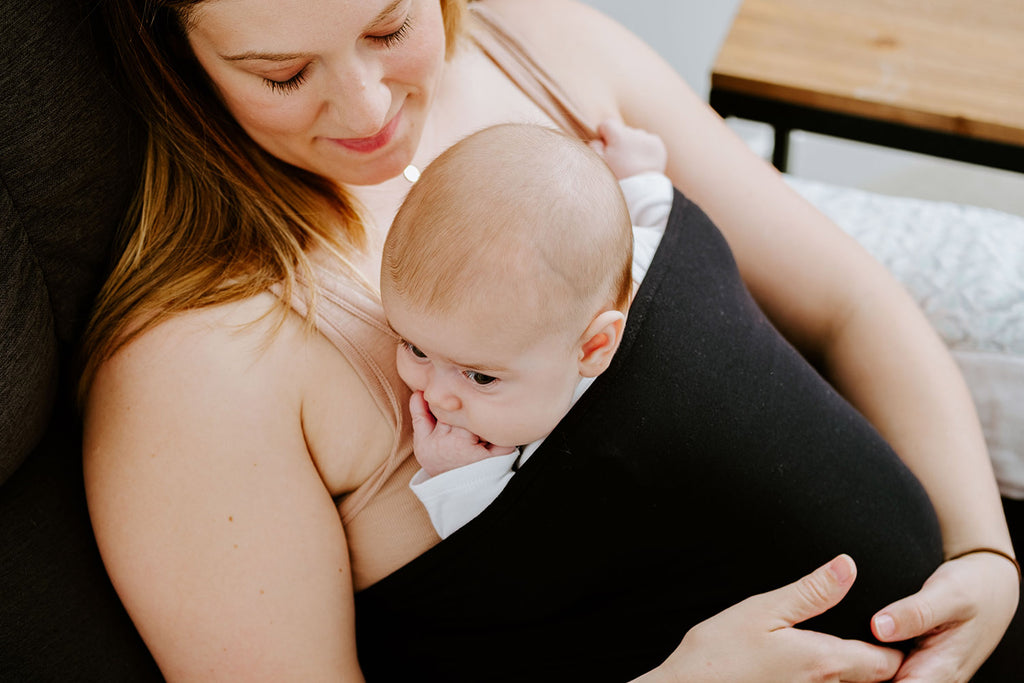The internet is saturated with dos and don’ts of parenthood, and many articles are unsupported by scientific evidence or research. Unfortunately, the conversation around skin-to-skin care isn’t exempt, and internet misinformation still exists.
With the support of scientific reference, this blog post confronts the biggest myths associated with skin-to-skin, and shows how in many cases, the complete opposite is true.
Myth 1: Skin-to-Skin is Only Important Immediately Following Birth
With a recent growth in awareness surrounding skin-to-skin care, a sharpened focus has been placed on the sixty minutes immediately after birth - a period otherwise known as the ‘Golden Hour'.
It’s true that skin-to-skin immediately after birth is very important, and studies and research (like this Stanford one) show that a baby who maintains skin-to-skin contact with its mother during this period is more likely to latch on to the breast.
In addition to breastfeeding ability, skin-to-skin brings many benefits to parent and baby if it continues for the following hours, days and weeks of your baby’s life - especially during the Fourth Trimester. In fact, a study which examined children at 10 years of age found that those who had received regular skin-to-skin contact as babies now displayed a range of benefits, including better maternal attachment behaviour, reduced maternal anxiety, enhanced child cognitive development and good mother-child communication.
Myth 2: Kangaroo Care Only Works When a Biological Mother Provides Benefits to Her Baby
Skin-to-skin contact is traditionally associated with mothers and babies, but that doesn’t mean it’s limited to it. In fact, the benefits of skin-to-skin can be achieved by any human touch. This means dads, grandparents, siblings and adoptive parents can all practice skin-to-skin with the new baby in their lives.
The Joeyband is designed to fit snugly based on the adult wearer’s size, and will then stretch to accommodate your baby. With three different sizes to accommodate different shapes and body frames, the Joeyband™ can be used by any family member or guardian to help care for and bond with your baby through skin-to-skin contact.
With an adjustable Velcro closure, each size has 21 inches of adjustability, providing a more universal fit for different caregivers and changing bodies. Because the baby will be placed high, with their head above the breasts, we recommend measuring around the top of the rib cage and nipple line to ensure a snug fit.
Myth 3: Skin-to-Skin Care is Only for Premature Babies
While skin-to-skin was introduced in Western hospitals during the 1970s as a life-saving practice for preterm and low-weight infants (who are generally more vulnerable to hypothermia and infections) this has now changed. Today, there are over 160 research studies on full-term newborns that document the need for, and benefits of, kangaroo care.
One recent study conducted by the World Health Organization (WHO) and published in EClinicalMedicine estimated that if skin-to-skin care was accessible to all parents across the 127 countries analyzed, more than 125,000 newborn lives would be saved.
The WHO, alongside UNICEF and Save The Children, promotes the practice as an “Essential element of newborn care to save and improve all newborn lives”.
Are you expecting a baby, or maybe you have a newborn? Follow us on Facebook or Instagram, or subscribe to our newsletter for our latest news and updates, or for more useful, baby-handling knowledge from our experienced Joeyband™ team.

